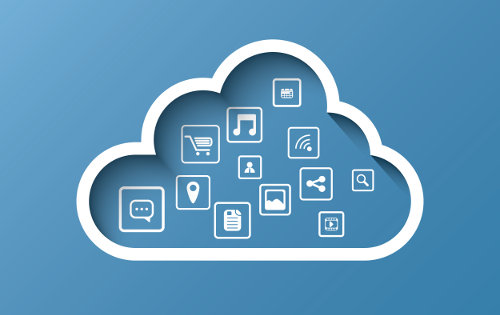When it comes to cloud computing facts and trends, nearly all IT specialists agree that it will be at the core of all technologies to resolve major business problems. That’s evident with enterprise cloud spending growing at a sixteen percent CAGR between 2016 and 2026. Thus, it’s safe to say that businesses and organizations are no longer considering the cloud as a tool alone.

Today, their focus is more on leveraging cloud security to achieve various business goals. Also, you can notice businesses utilizing cloud infrastructure to serve the more dynamic and complicated needs of the company.
In 2021, around eighty-three percent of the company workload will be stored in the cloud as an increasing number of businesses continue to move from the private to the public cloud.
According to Gartner, revenue from the public cloud sector is anticipated to increase from $175 billion in 2018 to $331 billion by 2022. That figure speaks of the numerous advantages of the cloud in the future.
However, you can already notice a lot of CIOs trying to test and understand how they can utilize the cloud to deal with their existing and future organization needs better.
Here are the facts you need to know about cloud computing.
1. Backup and disaster recovery
System failures, data outages, and cyber-attacks are a part of running an organization these days. Many organizations have handled their servers crashing, resulting in the loss of important data files.
To guarantee such concerns do not damage the company and its processes, backup and disaster recovery should become a trending use case of the cloud. Fifteen percent of the cloud budget is assigned to such, which is the highest budget allocation followed by productivity and email hosting tools.
A cloud-based ERP backup and disaster recovery solution can be a recovery strategy. It systematically maintains and stores copies of electronic records in an external cloud server.
2. AI platform
An IBM study shows that sixty-five percent of companies believe AI is crucial for their success and strategy. By using AI, computing platforms are improving their efficiency. It provides companies the capability to manage and automate their processes smartly.
AI is certainly a cloud computing trend to consider as it allows smoother company workflows and improved efficiency.
3. Edge computing
With IoT on a huge increase, edge computing will play a crucial role in offering real-time information and data analysis and simplifying the work of traffic from IoT devices. That statement could be supported by statistics from Gartner, saying 5.6 billion IoT devices owned by governments and enterprises will use edge computing for data collection and processing.
4. Service mesh
Cloud platforms are complicated. That’s why it’s essential the platform has a safe and quick communication environment. With a service mesh, users have a dedicated sheet for service-to-service communication, which makes their cloud platform extremely secure and dynamic.
As cloud ecosystems improve and are adapted to fit the varying needs of users, a service mesh could fill the various needs coming up from service identity to access different policies within the cloud platform.
5. Open-source
This industry is going towards a road of collaboration and innovation. With that change in how cloud services are managed, most companies are considering adopting an Open source cloud computing service for their business.
Open-source cloud is a service designed with software technology, which could be personalized by anyone. In short, an open-source platform enables businesses to modify the infrastructure based on their particular requirements.

6. DevSecOps
DevSecOps is the procedure of thinking of infrastructure security from the beginning. It works on automating core security tasks through embedding security processes and controls into its workflows.
Based on a SumoLogic report, forty-five percent of IT stakeholders agree that adopting this methodology is one of the main organizational changes, which would help enhance their cloud environments’ security.
7. Serverless architecture
A serverless architecture eliminates every barrier that an average IT infrastructure would typically bring. Users do not have to buy or rent the servers, which they run their data on. As an alternative, a third party will manage that all for you, enabling your company to handle other important tasks.
The benefits of a serverless architecture are manifold—simple operational management, lowered liability, no system administration, and better offline experience, to name a few.
Further, the increase of the shared economy brought serverless architecture to life in the cloud computing sector. Its cost-efficiency is what makes it a trend.
8. Hybrid or multi-cloud solutions
In case you didn’t know yet, hybrid cloud computing is about using a combination of third-party, public cloud service, and private cloud. It’s mainly utilized to enable workloads to move between public and private clouds, offering users much flexibility with their computing needs.
With its benefits, the market size of multi-cloud is anticipated to increase to $97 billion by 2023. Tech giants such as Amazon and Microsoft are already investing in this kind of technology as a product.
9. Cloud security
Deletion, leakage, and data theft—security is a major problem even for standard IT infrastructures. However, with more organizations moving to cloud platforms, it is essential to make sure that cloud service providers can make airtight security systems to ensure the safety of their client’s data.
Cloud security is not only a trend in cloud computing this year, but it’s a necessity that’s often prioritized by each company. Further, with the presentation of GDPR in late 2018, security concerns have grown challenges for cloud technology security compliance.
10. IoT platforms
One of the most famous cloud computing trends is the increase of IoT platforms, especially with today’s hyper-connected world. An IoT platform is a cloud-enabling platform working with standard devices to allow cloud-based services and applications on it.
IoT serves as a mediator, collecting data from various services through smart device management and remote device configuration.
It is important that you find the perfect technology platform that’s dependable and meets the needs of your company. It’s important to get started with a cloud computing strategy that handles all your needs.